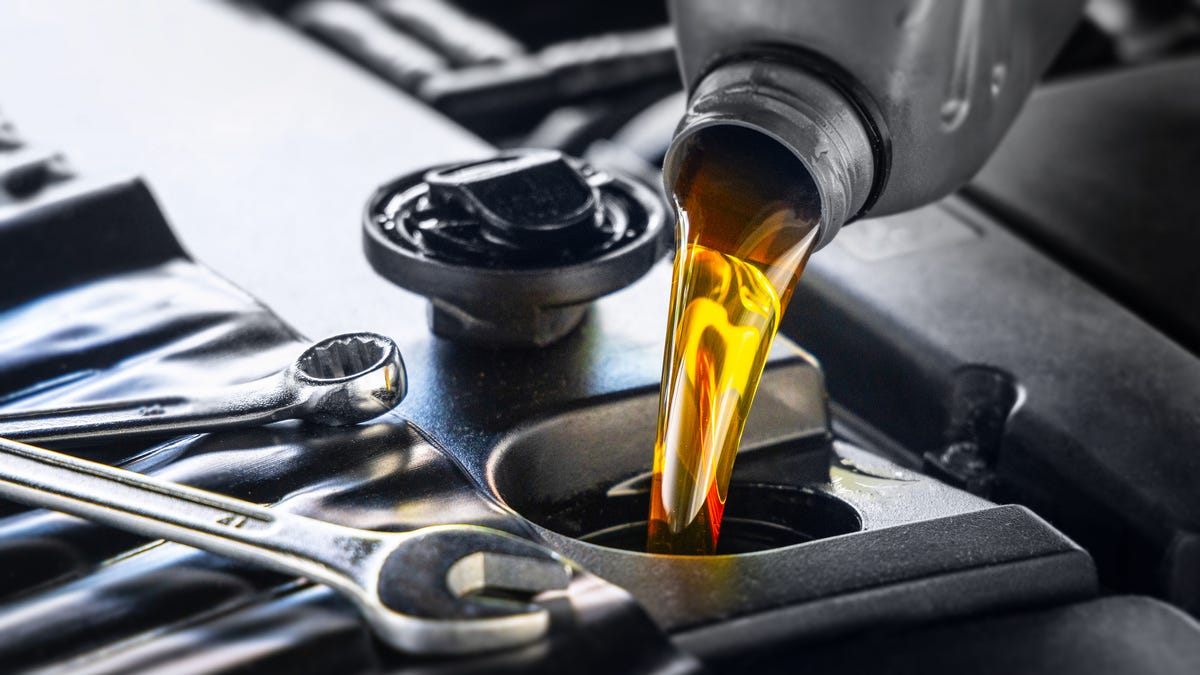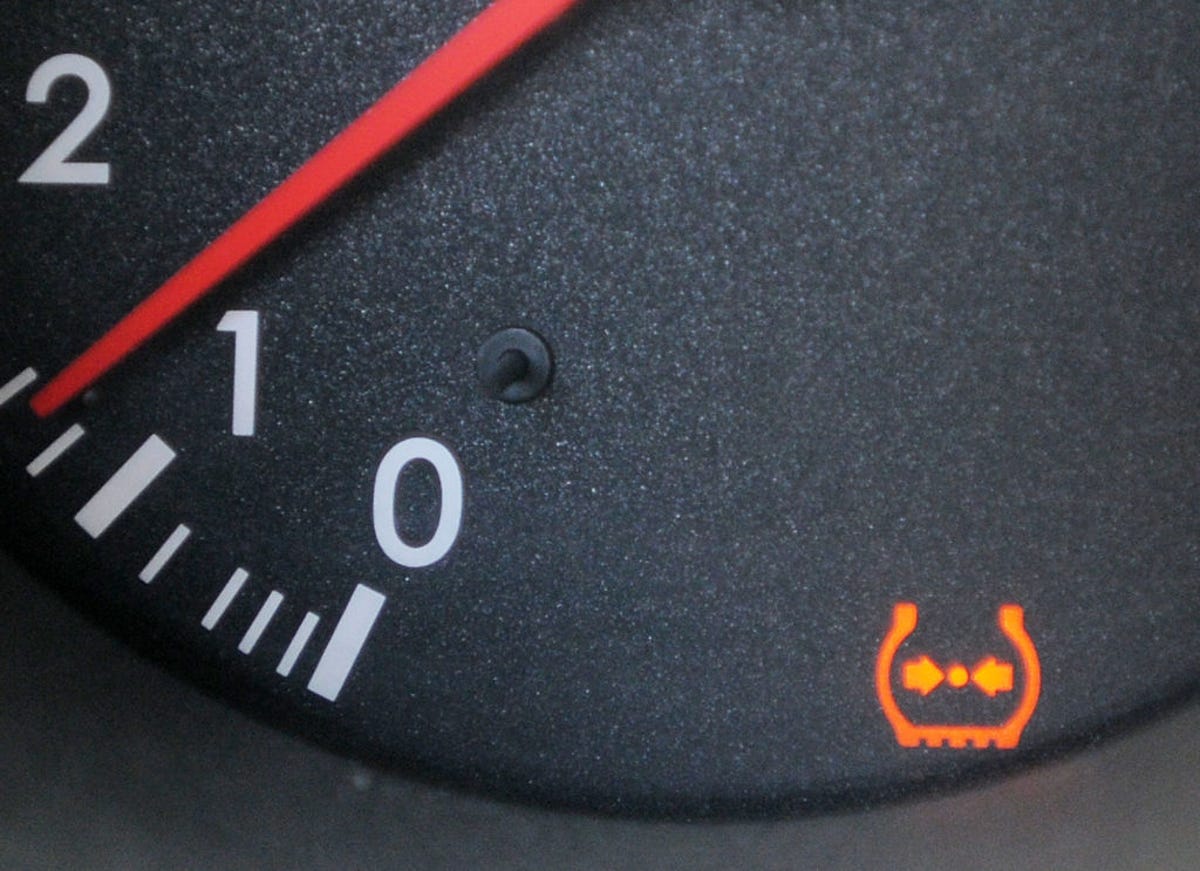
Gas prices tend to go up in the summer as people hit the road for road trips and family vacations.
It’s also the time of year when refineries shut down for maintenance, decreasing the available supply of oil. And hurricanes, tornadoes, wildfires and other natural disasters that can affect production and transportation occur more frequently during warm weather months.
Even the grade of fuel that retailers have to sell in the summer is more expensive.
There are countless tricks to save gas, from changing your air filters to turning off your car at red lights. Some are legit while others are a bust.
Next, we’ve lifted the hood on what gas-saving tips do and don’t come close to.
Allowed, Find out which credit cards have the best fuel rewards.
7 myths about gas mileage

The FTC has warned that most fuel additives have little or no impact on mileage.
Deepblue4you/Getty Images
Ignore these suggestions. They don’t really work and can waste time and money.
1. Keep tank full to prevent evaporation. Letting the gas gauge get close to empty is never a good idea. But the theory that filling the tank prevents fuel evaporation is bunk. Modern cars are equipped with vapor recovery systems that minimize losses.
2. Buy gas at the beginning of the morning The theory is that since liquids become denser in cooler temperatures, you’ll get more bang for your buck by filling up in the morning. But gasoline is stored in underground tanks where the temperature is regulated.
However, the roads may be less crowded in the morning, which could save you from wasting gas idling in traffic.
3. Replace air filters often. Again, this is a tip that may have worked once, but not anymore. Older cars filtered air into the carburetor, so a clogged filter could affect mileage. But today’s engines have fuel injectors and other technologies that carefully regulate the air-fuel ratio.
A study of gasoline engines by the Oak Ridge National Laboratory determined that “dirty engine air filters do not affect fuel economy in modern vehicles.”
Of course, dirty air filters can cause sluggish acceleration and other problems.
4. Overinflate yours tires If your friend insists that overinflating your tires will decrease drag and save you gas, tell them to slow down. As little as 10 psi (pounds per square inch) above the manufacturer’s recommended levels reduces the “contact patch,” where the tire touches the road. This means less traction, longer stopping distance and more wear and tear on the tires themselves, resulting in negligible gas savings.
5. Change the oil frequently. It’s a common misconception that if you have to get an oil change, your car’s gas mileage will be affected. While it’s best to keep up with maintenance, don’t expect your mileage to improve after a trip to Jiffy Lube.
However, your mileage can improve by up to 2% if you use the manufacturer’s recommended grade of motor oil.
6. Lower the tailgate. Pickup truck drivers like to claim that lowering the truck’s tailgate is better for aerodynamics and therefore improves gas mileage. But according to General Motors’ aerodynamics lab, it’s better.
“As the air flows over the truck, it falls over the cab and pushes forward on the back of the truck,” the company said. “With the tailgate down, the benefits of that airflow are reduced.”
7. Buy fuel additives or a “fuel saver”. The Federal Trade Commission is warning consumers that claims made by manufacturers of devices and additives that promise to increase gas mileage “are either false or grossly exaggerated.”
After testing more than 100 such products, the FTC found none that significantly improved mileage.
Devices installed in your engine can even break the law by circumventing emission standards.
“People should be suspicious of any device that promises to increase fuel efficiency,” Patrick De Haan, head of petroleum analysis at Gas Buddy, told CNET.
7 Gas Saving Tips That Really Work
1. Slow and steady wins the race. Rapid acceleration burns gas at a faster rate than driving at a slower, steady pace. If you can maintain a constant speed, it will help you save gas. According to De Haan, people who constantly rush and press the gas pedal tend to use more gas due to the rapid acceleration.
“If people drove at a slower acceleration rate and avoided running through a red light, it would help them prevent […] burning gas and using energy,” he said.
Vehicles are most efficient between 55 and 60 miles per hour. Anything above that starts to drain a car’s efficiency, De Haan said.
2. Use cruise control when possible. The easiest way to maintain a constant speed? cruise control It’s an easy way to maintain a constant speed, instead of slowing down and accelerating back to 55 miles per hour. It is best to use cruise control when driving on a flat road without stops, for example a highway.
“Cruise control is much more effective than a human at maintaining speed and can help save fuel,” De Haan said.
3. Turn off the car at red lights and other long stops. According to Linda Gaines, a transportation systems analyst at Argonne National Laboratory, turn off your car if it’s going to be idle for 10 seconds or more. It not only saves gas, but also reduces carbon dioxide emissions.
What about wearing out your starter motor?
“Today’s starters are more robust than those in older cars,” Gaines said. Unless you’re accelerating more than 10 times a day, “it’s unlikely the starter motor will need to be replaced over the life of the vehicle.”
However, he advises against turning the car on and off in stop-and-go traffic.
“Driving safely means being able to respond quickly to traffic conditions,” Gaines said.
4. Keep the air conditioning. According to the US Department of Energy, using air conditioning can reduce your fuel economy by more than 25%. But going down the window, especially at higher speeds, can increase wind resistance and use more fuel.
De Haan recommends leaving the windows open if you’re driving on city streets, where you may move more slowly or not move more often. Otherwise, using the air conditioner is fine.
5. Remove the racks from the car when not in use. If you drive a vehicle with large roof racks, De Haan advises removing them when not in use to increase your car’s aerodynamics.
Smaller ski and bike racks are generally fine to leave.
6. Keep your tires properly inflated. While overinflating your tires isn’t a mileage hack, making sure they’re properly inflated can improve gas mileage by up to 3 percent, according to the Department of Energy.
Letting tire pressure drop below 25 PSI can cause increased friction, De Haan said, forcing the engine to work harder and get fewer miles per gallon.

Low tire pressure can mean less miles per gallon. So keep an eye on the tire pressure monitoring system light on your dashboard.
Patrick Whittemore/MediaNews Group/Boston Herald via Getty Images
Most cars will warn you when a tire is low. The Tire Pressure Monitoring System, or TPMS, light usually looks like parentheses with an exclamation mark or a dot in the middle.
7. Combine trips while running errands. If you have multiple errands to run on opposite sides of town, plan so you don’t drive back and forth. For example, if the post office is next to the coffee shop, but it’s not open yet, make that your last stop instead of having to drive back to that area.
When you need to run errands to places that aren’t nearby, it’s best to try to do everything in one trip. Your car’s engine is more efficient when it’s warmed up, which can save you some gas. It also prevents you from driving extra miles by making trips on different days.
Does auto start stop technology increase mileage?
Many new cars are equipped with start-stop technology that automatically activates when you come to a complete stop and when you press the gas pedal. These systems automatically shut off the engine when the car comes to a complete stop – your AC and other electronics will continue to run. As soon as you press the gas pedal, the engine immediately restarts.
Vehicles with this automatic system see up to a 7% improvement in fuel economy, according to AAA. If your car is equipped with this feature, you are already saving gas without doing anything extra.


